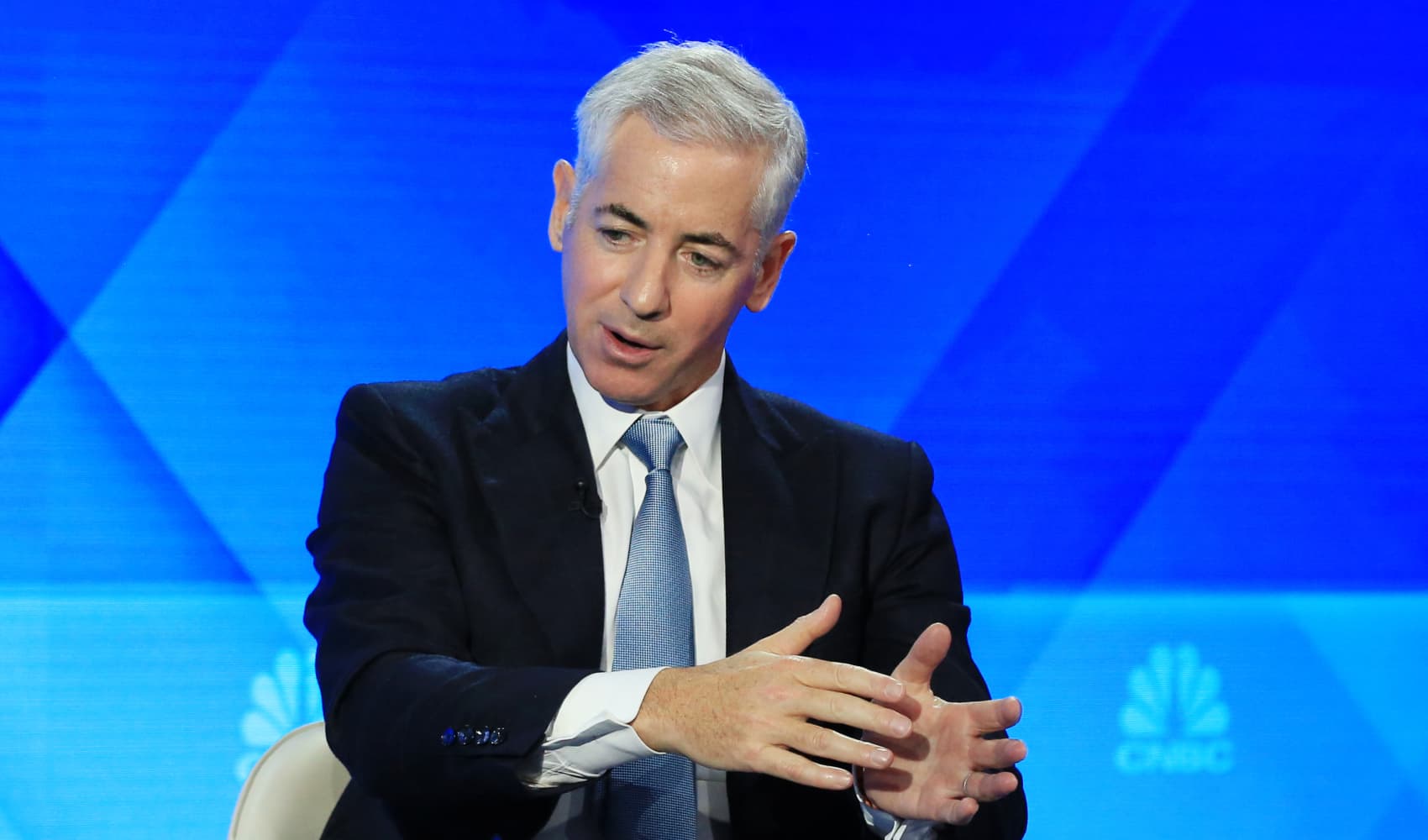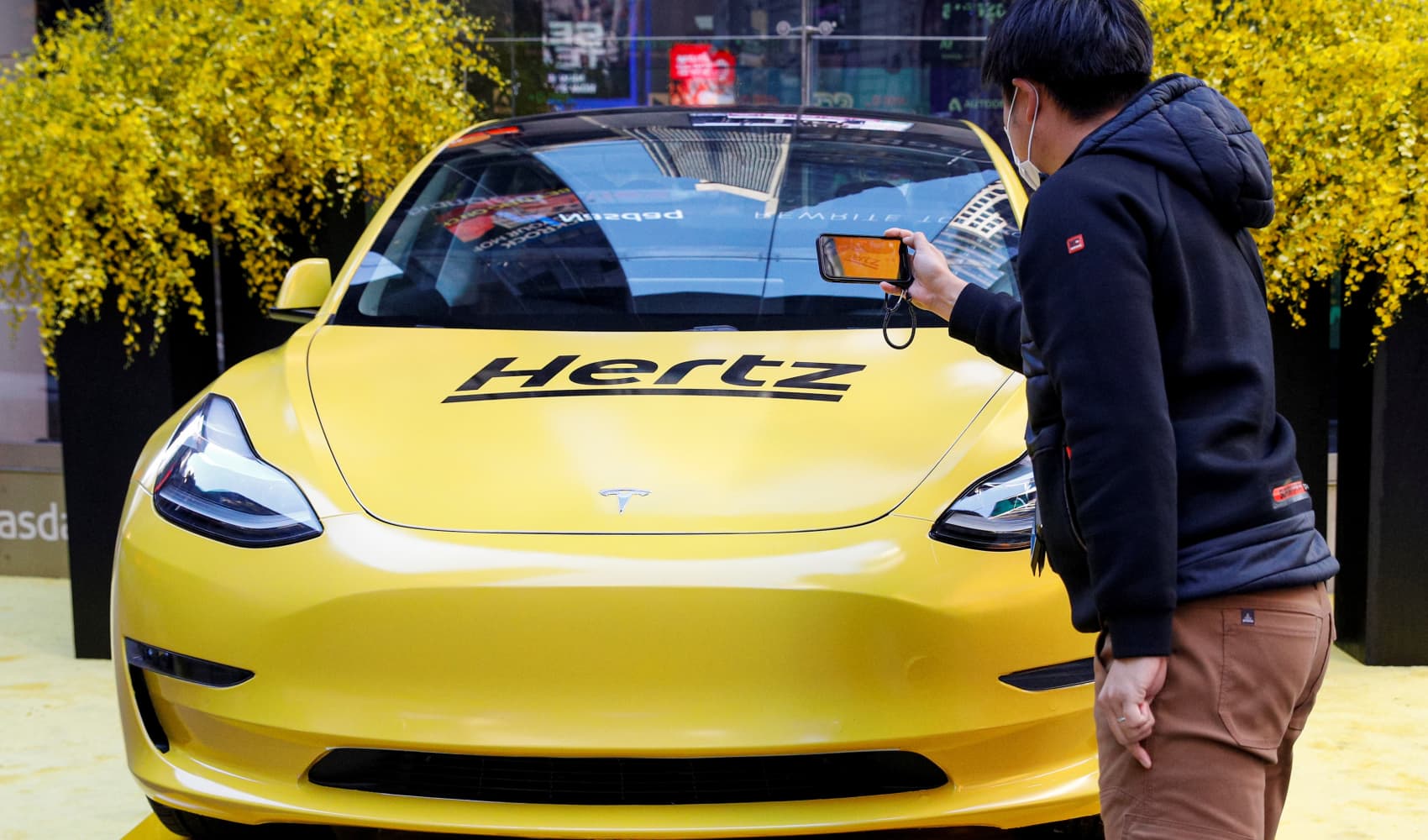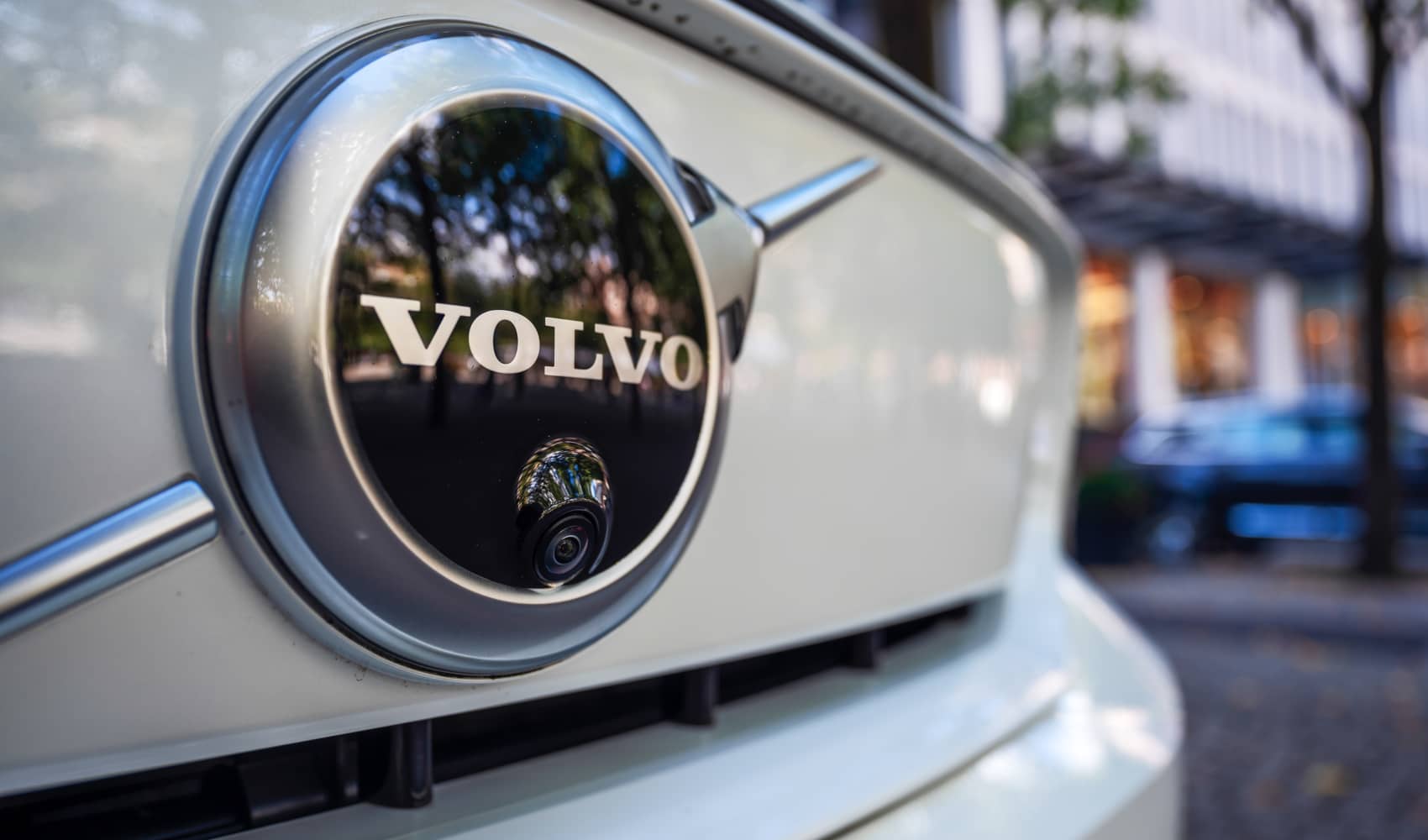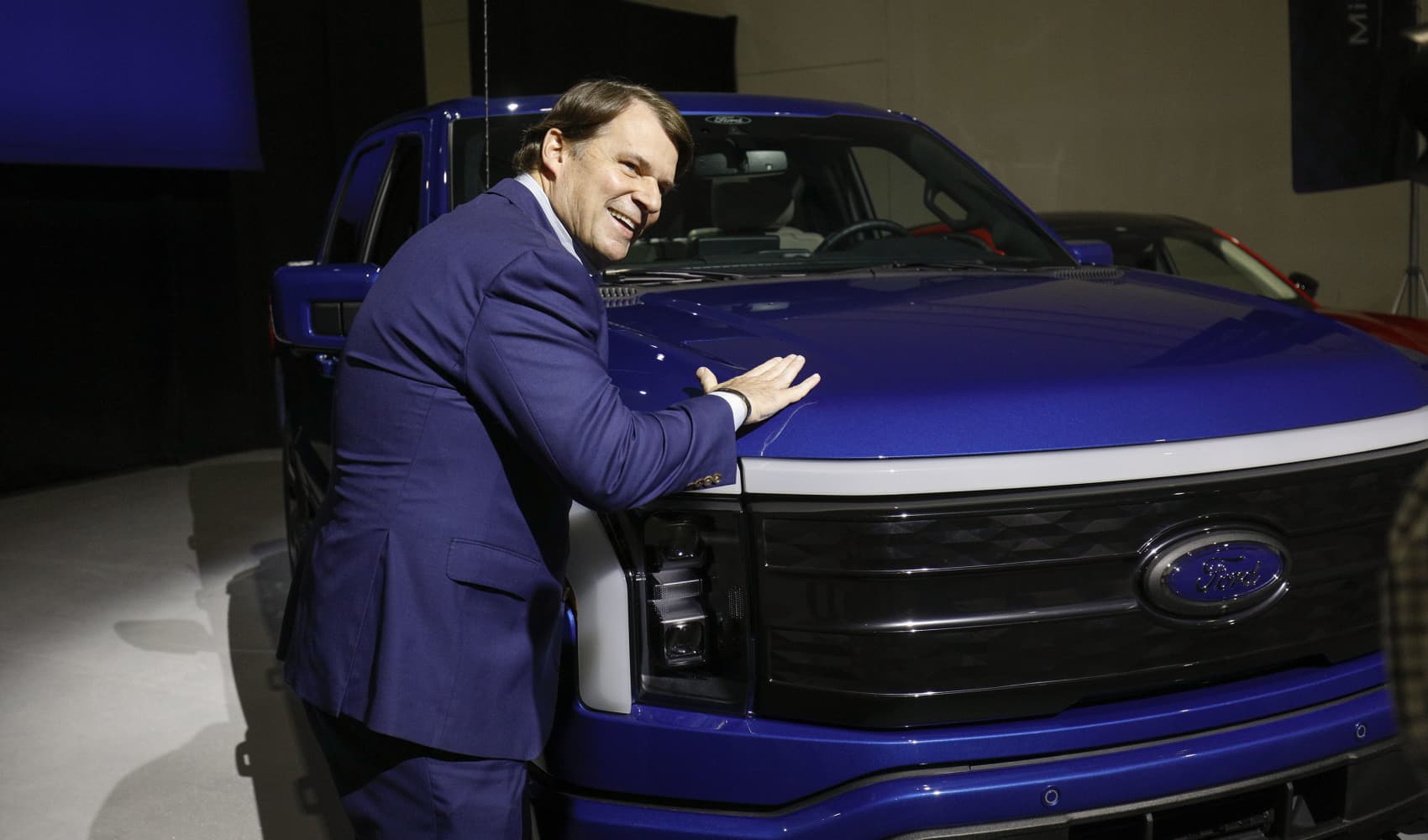Hertz Stock Soars: Ackman's 20% Stake Fuels 50%+ Jump!
Hertz Rockets Skyward: Ackman's Billion-Dollar Bet Fuels 50%+ Share Surge!
The Bill Ackman Effect: Hertz Shares Go Parabolic
Remember when Hertz was navigating the treacherous waters of bankruptcy just a few years ago? Well, fast forward to today, and the company's stock is soaring like a rocket after news broke that Bill Ackman's Pershing Square Capital Management has taken a significant stake. Shares exploded by over 50% on Wednesday, marking a dramatic turnaround for the rental car giant. Could this be the beginning of a new golden age for Hertz? Let’s dive in!
Ackman's Stealthy Accumulation: A Whale in the Tank
According to a regulatory filing, Pershing Square had amassed a 4.1% position in Hertz by the end of 2024. But that's just the tip of the iceberg. A source familiar with the situation revealed to CNBC that Ackman has significantly increased his holdings to a whopping 19.8% through a combination of shares and swaps. This makes Pershing Square the second-largest shareholder in Hertz! Talk about making a splash!
Why the Delay? SEC Exemption Explained
The U.S. Securities and Exchange Commission (SEC) granted Pershing Square an exemption to delay the public disclosure of its growing position. This allowed them to accumulate a substantial number of shares without sending the price skyrocketing prematurely. Imagine trying to fill your gas tank while everyone else is watching – the price would go up immediately! The exemption allowed Ackman to fill up before anyone noticed.
Hertz's Rocky Road: From Bankrupt to Boom?
Hertz has faced significant challenges over the past decade, including a stint in bankruptcy. The company struggled with heavy debt, declining revenues, and the disruptive rise of ride-sharing services. The pandemic only exacerbated these problems, leading to a Chapter 11 filing in 2020. So, why is Ackman betting big on a company with such a turbulent past? That's the million-dollar question (or, in Ackman’s case, the billion-dollar question!).
The Electric Vehicle Gamble: A Double-Edged Sword?
Hertz made a bold move into the electric vehicle (EV) market, investing heavily in Tesla and Polestar vehicles. While this strategy was initially seen as forward-thinking, it has since faced headwinds. The company has begun to scale back its EV fleet due to high repair costs and lower resale values. Was this a misstep, or just a temporary setback? Only time will tell.
Ackman's Playbook: What's His Strategy?
Bill Ackman is known for his activist investing style, which means he typically takes a large stake in a company and then pushes for changes to improve its performance. He’s not afraid to shake things up! So, what can we expect from Ackman at Hertz?
Operational Improvements: Streamlining and Efficiency
One likely focus is on operational improvements. Ackman may push for cost-cutting measures, more efficient fleet management, and a better customer experience. Think of it as giving Hertz a much-needed tune-up to get it running smoothly.
Strategic Direction: Charting a New Course
Ackman may also influence the company's strategic direction. This could involve refining the EV strategy, exploring new partnerships, or even considering mergers and acquisitions. He might see opportunities to unlock value that others have missed. It’s like a chess game – Ackman is likely thinking several moves ahead.
The Market Reaction: A Vote of Confidence
The market's overwhelmingly positive reaction to Ackman's investment suggests a strong belief in his ability to turn Hertz around. Investors are clearly betting that his involvement will lead to significant improvements in the company's financial performance. It's a signal that Wall Street sees potential where others saw only problems.
Beyond the Initial Surge: Can Hertz Sustain the Momentum?
While the initial share price surge is exciting, the real question is whether Hertz can sustain this momentum. Can the company successfully execute its turnaround strategy and deliver long-term value to shareholders? The next few quarters will be crucial in determining whether this is a short-term pop or a genuine transformation.
The Rental Car Landscape: Competition and Disruption
The rental car industry is highly competitive, with players like Enterprise, Avis, and Budget vying for market share. Additionally, the industry faces ongoing disruption from ride-sharing services and the evolving transportation landscape. Hertz needs to adapt and innovate to stay ahead of the curve.
Innovation and Technology: The Key to Future Success
To thrive in the long run, Hertz must embrace innovation and technology. This includes investing in digital platforms, enhancing the customer experience through mobile apps, and exploring new business models. Think of it as upgrading from a horse-drawn carriage to a self-driving car – you have to evolve to survive.
Risks and Challenges: Not a Smooth Ride
Despite the positive outlook, there are still risks and challenges facing Hertz. Economic downturns, fluctuations in fuel prices, and unforeseen events (like another pandemic) could all negatively impact the company's performance. Investing in any company carries risk, and Hertz is no exception.
Debt Load: A Lingering Burden
Hertz still carries a significant amount of debt from its bankruptcy. Managing this debt burden effectively will be crucial to the company's long-term financial health. It’s like carrying a heavy backpack – it can slow you down.
The Future of Hertz: A Brighter Road Ahead?
With Bill Ackman now a major shareholder, Hertz has a renewed sense of hope and optimism. While challenges remain, the company has a strong brand, a large fleet, and a significant presence in the rental car market. Ackman's involvement could be the catalyst needed to unlock Hertz's full potential.
The Investor's Perspective: Should You Hop On Board?
For investors, Hertz presents both an opportunity and a risk. The potential for significant gains is undeniable, but so is the possibility of setbacks. Thorough research and careful consideration are essential before making any investment decisions. Don't just blindly follow the herd – do your own homework!
Conclusion: A New Chapter for Hertz
Bill Ackman's significant investment in Hertz has sent shockwaves through the market, igniting a massive rally in the company's stock. While the future remains uncertain, this event marks a new chapter for Hertz, filled with both opportunities and challenges. Key takeaways include Ackman’s potential to drive operational improvements, the importance of strategic direction, and the inherent risks in the rental car industry. Whether Hertz can sustain this momentum remains to be seen, but one thing is clear: the road ahead will be anything but boring.
Frequently Asked Questions (FAQs)
Here are some frequently asked questions about Hertz and Bill Ackman's investment:
- Why did Hertz file for bankruptcy?
Hertz filed for bankruptcy in 2020 due to a combination of factors, including heavy debt, declining revenues, and the impact of the COVID-19 pandemic on travel demand.
- How much did Bill Ackman invest in Hertz?
While the exact dollar amount is not publicly available, Pershing Square now holds a 19.8% stake in Hertz through shares and swaps, making them the second-largest shareholder.
- What is an activist investor?
An activist investor is someone who takes a large stake in a company and then actively pushes for changes to improve its performance, such as cost-cutting, strategic shifts, or management changes.
- What are the biggest risks facing Hertz right now?
Some of the biggest risks facing Hertz include managing its debt load, navigating the competitive rental car landscape, and adapting to evolving transportation trends (like the increasing popularity of ride-sharing services).
- What is Hertz's EV strategy?
Hertz initially invested heavily in electric vehicles (EVs), but has recently begun scaling back its EV fleet due to high repair costs and lower resale values. They are re-evaluating their approach to EVs.



